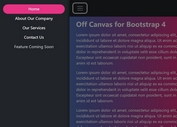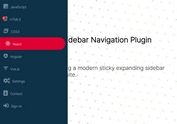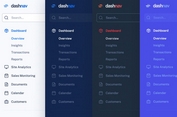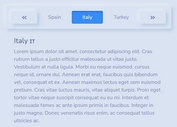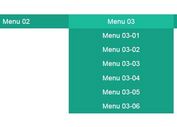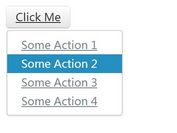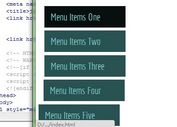Mobile-first Off-canvas Side Navigation For Bootstrap 5
| File Size: | 8.47 KB |
|---|---|
| Views Total: | 5662 |
| Last Update: | |
| Publish Date: | |
| Official Website: | Go to website |
| License: | MIT |
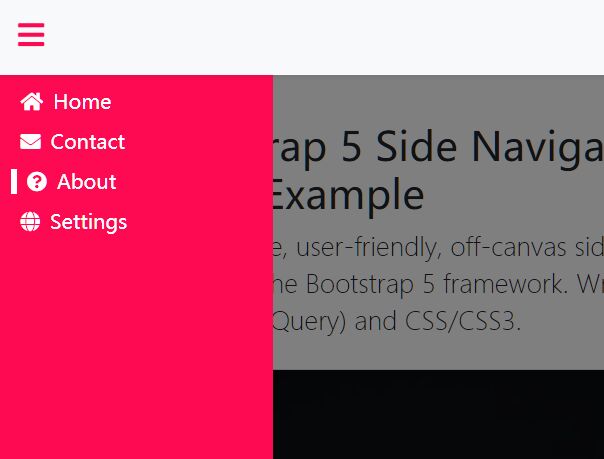
A responsive, user-friendly, off-canvas side navigation system for the Bootstrap 5 framework. Written in JavaScript (jQuery) and CSS/CSS3.
Features:
- Desktop & Tablet: Shows a vertical toolbar on the screen that expands to the full-width when you click the hamburger button.
- Mobile: Hides the vertical toolbar and allows the user to toggle the off-canvas side menu by tapping the hamburger button.
- Shows a background overlay covering the main content when the off-canvas side menu is activated.
How to use it:
1. Add menu items to the off-canvas side navigation. Make sure you first have Bootstrap 5 framework loaded in the document.
<div id="SideNavID" class="sideNavClose"> <a class="nav-menu-item" href="#">Menu 1</a> <a class="nav-menu-item" href="#">Menu 2</a> <a class="nav-menu-item" href="#">Menu 3</a> <a class="nav-menu-item" href="#">Menu 4</a> <a class="nav-menu-item" href="#">Menu 5</a> ... </div>
2. Create a hamburger toggle button on the navbar.
<a id="NavMenuBar" class="navbar-brand nabMenuBar" href="#"> Hamburger Icon Here </a>
3. Create an empty container for the background overlay.
<div id="ContentOverlayID" class="ContentOverlayClose"> </div>
4. The necessary CSS styles for the Off-canvas Side Navigation.
.nabMenuBar{
color: #FE0A52 !important;
font-size: 24px !important;
}
.nav-menu-item{
text-decoration: none;
color: white;
}
.nav-menu-item:hover{
text-decoration: none;
color: white;
border-left: 5px solid white;
transition: 0.1s;
}
.sideNavOpen{
height: 100%;
width: 220px;
position: fixed;
top:0;
left: 0;
z-index: 10;
overflow-x: hidden;
padding-left: 10px;
padding-top: 20px;
transition: 0.1s;
background-color: #FE0A52;
}
.sideNavClose{
height: 100%;
width: 60px;
position: fixed;
top:0;
left: 0;
z-index: 10;
overflow-x: hidden;
padding-left: 10px;
padding-top: 20px;
transition: 0.1s;
background-color: #FE0A52;
}
.ContentOverlay{
display: block;
position: fixed;
height: 100%;
top:0;
left: 0;
z-index: 7;
right: 0;
bottom: 0;
cursor: pointer;
background-color: rgba(0,0,0,0.5);
}
.ContentOverlayClose{
display: none;
}
.Content{
margin-left: 60px;
margin-top: 60px;
z-index: 5;
}
@media (max-width: 575.98px) {
.Content { margin-left: 00px; }
.sideNavClose { visibility: hidden }
}
5. Load the required jQuery library at the end of the document.
<script src="/path/to/cdn/jquery.min.js"></script>
6. The main JavaScript (jQuery script) to activate the off-canvas side navigation.
$('#NavMenuBar').click(function () {
SideMenuOpenClose();
});
$('#ContentOverlayID').click(function () {
SideMenuOpenClose();
});
function SideMenuOpenClose() {
let SideNavID= $('#SideNavID');
let ContentOverlayID= $('#ContentOverlayID');
let menuText=$('.menuText');
if (SideNavID.hasClass('sideNavClose')){
SideNavID.removeClass('sideNavClose')
SideNavID.addClass('sideNavOpen')
menuText.removeClass('d-none');
ContentOverlayID.removeClass('ContentOverlayClose')
ContentOverlayID.addClass('ContentOverlay')
} else {
SideNavID.removeClass('sideNavOpen')
SideNavID.addClass('sideNavClose')
menuText.addClass('d-none');
ContentOverlayID.removeClass('ContentOverlay')
ContentOverlayID.addClass('ContentOverlayClose')
}
}
This awesome jQuery plugin is developed by rupomsoft. For more Advanced Usages, please check the demo page or visit the official website.
